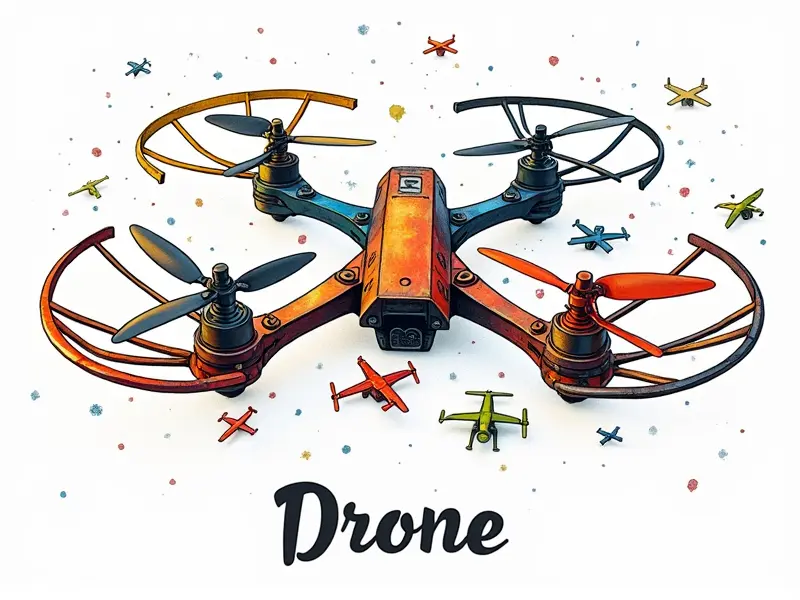How to control RC plane?

Beginner's Guide to Flying RC Planes
Welcome to the exciting world of remote control (RC) planes! Whether you're a seasoned model aircraft enthusiast or just starting out, flying an RC plane can be both thrilling and challenging. This guide will help you understand the basics of controlling your first RC plane.
Understanding Your RC Plane Controls
Your RC plane is controlled via a transmitter (remote control) that sends signals to the receiver installed in the aircraft. The most common types of RC planes are electric-powered and nitro-powered. Electric planes use battery packs, while nitro planes run on glow fuel.
Mastering RC Plane Controls Quickly
Mastery comes with practice. Start by familiarizing yourself with your transmitter’s layout:
- Ailerons (roll): Located on the left stick, these control the plane's rolling motion.
- Elevators (pitch): Also on the left stick, this controls the up and down movement of your aircraft.
- Rudder (yaw): On the right stick, it controls the turning direction of the plane.
- Throttle: Adjusts engine speed or motor power on electric planes. Located on the right stick for nitro planes.
Top Tips for Controlling RC Airplanes
To improve your flying skills, follow these tips:
- Start Slowly: Begin with simple maneuvers and gradually increase complexity as you gain confidence.
- Practice in Open Areas: Find a spacious location free from obstacles to practice safely.
- Use Simulator Software: Many simulators are available online, allowing you to practice without risking damage to your plane.
Learn RC Plane Control in Minutes
Learning the basics can be quick and straightforward. Here’s a step-by-step process:
- Charge Up Your Battery: Ensure your electric plane is fully charged before taking off.
- Pre-flight Check: Inspect all components for damage or loose parts.
- Launch: Practice launching techniques such as hand-launching or using a catapult system.
- Fly Straight and Level: Focus on keeping the plane flying straight and at a constant altitude before attempting turns.
Simple Tricks for Better RC Plane Control
Here are some simple tricks to enhance your control over the aircraft:
- Slight Adjustments: Make small, incremental adjustments rather than large movements.
- Stabilize Before Turning: Ensure the plane is stable before initiating a turn for smoother maneuvers.
- Use Trim Settings: Fine-tune your settings to correct any inherent imbalance in your aircraft.
Smooth Landing Techniques for RC Pilots
A smooth landing can be challenging but is crucial for preserving the integrity of your plane. Here are some tips:
- Approach Slowly: Reduce throttle gradually as you approach the ground.
- Level Off: Keep the plane level just above the surface to ensure a gentle touchdown.
- Use Flaps: Lower flaps for better lift and control during landing.
Navigate Like a Pro with RC Planes
To navigate like a pro, you need to master several key skills:
- Reading Wind Direction: Understand how wind affects your plane's flight path and adjust accordingly.
- Executing Turns Efficiently: Practice smooth turns that maintain altitude and speed.
- Using GPS Tracking: Some advanced RC planes come equipped with GPS technology to help navigate complex routes.
Essential Skills for RC Plane Mastery
To become a proficient RC pilot, focus on these essential skills:
- Aerobatics: Learn basic aerobatic maneuvers like loops and rolls to impress fellow enthusiasts.
- Emergency Landings: Know how to perform an emergency landing if your plane loses power or control.
- Maintenance and Repair: Regularly check and maintain your equipment for optimal performance.
How to Steer an RC Plane Like a Pro
Becoming proficient in steering involves mastering the following techniques:
- Coordination of Controls: Use all controls simultaneously to achieve smooth and precise movements.
- Anticipating Movements: Anticipate how your plane will react based on its current state and conditions.
- Practice Regularly: Consistent practice is key to developing muscle memory for better control.
RC Plane Controls Made Easy
Making RC plane controls easy starts with understanding the basics. Here’s a quick overview:
- Left Stick: Ailerons (roll) and elevators (pitch).
- Right Stick: Rudder (yaw) and throttle.
Quick Start Guide: RC Plane Controls
This quick start guide covers the essentials to get you flying in no time:
- Charge Battery: Ensure your electric plane is fully charged.
- Check Components: Inspect all parts for any damage or loose connections.
- Launch Plane: Practice hand-launching techniques to get the aircraft airborne.
- Fly Straight and Level: Focus on maintaining a straight flight path before attempting turns.
Conclusion
Mastery of RC plane controls is achievable with practice, patience, and persistence. By understanding your equipment, practicing regularly, and utilizing the tips provided in this guide, you'll be well on your way to becoming an accomplished RC pilot. Enjoy the journey and have fun flying!

